Reflections from the Latinx Theatre Commons María Irene Fornés Institute Symposium
By all accounts, the Latinx Theatre Commons (LTC) María Irene Fornés Institute Symposium on 14 April 2018 at Princeton University’s Lewis Center for the Arts was a family reunion. While conveners brought different experiences with playwright and teacher María Irene Fornés, from decades of working with her to just recently learning about her, everyone in the room was there to amplify the legacy of Fornés and build community around one of the pillars of the American theatre. Among the nearly one hundred people in the room were artists who studied with Fornés for years at INTAR to younger artists who were looking for their first significant exposure to her work.
Departing from the structure typically employed at LTC convenings, the Fornés Symposium was a performance in and of itself. As opposed to a set schedule, participants selected from eleven “interludes,” creating a “choose your own adventure” convening of sorts. Participants chose from the following sessions: Scenes from the Actors Studio production of The Danube, directed by Estelle Parson; Playwriting Workshop with Josefina López; Inspired Disruption with Amparo Garcia-Crow; Translating Fornés, led by Rose Cano, with Monica Cortes Viharo; Researching and Teaching Fornés Today, led by Christina León, with Roy Pérez and Gina Sandi-Diaz; performance of Fefu and Her Friends, Playwriting Workshop with Anne García-Romero; Acting Fornés, led by Blanca Camacho; Screening of The Rest I Make Up, directed by Michelle Memran; Tracing the “Lost” Fornés Works, led by Dr. Gewndolyn Alker; and Fornesian Dramaturgy, led by Caridad Svich. While the following reflections by no means offer a comprehensive overview of each interlude, we hope they offer a snapshot into the magic that was the Fornés Symposium.
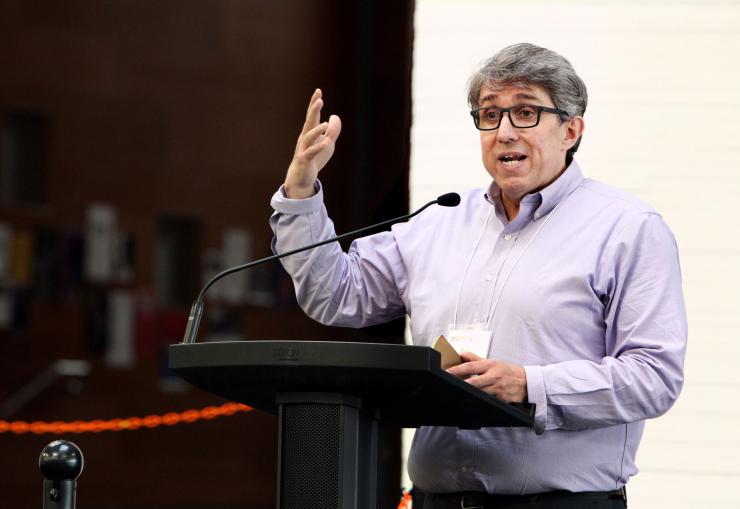
Close to the Fire
By Georgina Escobar
There is a Chinese aphorism that wisely states, “Let us draw closer to the fire so that we may better see what we are saying.” This observation gathers that communication, connection, and understanding require a sense we seldom attribute to the art of listening: seeing. I write these words as I am coming down from a proverbial high after attending the Fornés Symposium. To “see what we are saying” was the very reason I voyaged through the intensive one-day event encompassing a series of workshops, presentations, performances, and, in true LTC style, intention-driven opening and closing ceremonies.
The track I chose for this experience was that which would bring me closer to Irene’s fire: her words and work, in performance. I modeled my track in this fashion: after opening ceremonies by our gracious host, Brian Eugenio Herrera, and with a tantalizing introduction to The Book of Miaou: Don’t Drink Everything Your Mother Pours You by Migdalia Cruz, I would witness scenes from Fornés’s The Danube presented by The Actors Studio, followed by the site-specific multi-room immersive presentation of Fefu and Her Friends, culminating in the two one acts inspired by Fornés’s work, I Am in 5th Grade, You Are in Kindergarten. I will focus on my experience with The Actor’s Studio performance of scenes from The Danube.
The Danube, in its presentation of only a few scenes, reinforced the robust repetition that creates the cyclical structure of Irene’s play. Presented originally at the 5th Padua Hills Festival under the title You Can Swim in the Danube—But The Water Is Too Cold in 1982, the piece is full of quotable jewels that hit like darts to a bulls-eye. The format is staccato, the assimilation of language is crass, and, as the cast reflected afterwards, the play must be read like a recipe. I’m not sure if they were referring to this play, specifically, or all of Fornés’ work. I imagine both. And I imagine they mean a recipe in the performance of it. But the most impressive part of the presentation—aside the puppets and the shadows they cast, which immediately triggered a Platonic cave metaphor for me—was the Waiter’s monologue. In true Fornés fashion, the words delivered from a most unexpected party were immaculate in content. Memorably, about Americans, the waiter says, “A problem solved is a lifting of a burden. Egyptians lifted heavy stones to build monuments. You lift them to get rid of heavy stones. Get rid of them! Obstacles!”
I was proud of my choices. I was happy to be thrown into the unknown and in that way draw close to a fire that was so ardently present in every participant’s heart. We were all there for the same reason: to celebrate the same person, to honor her legacy, and soak in her knowledge. It was a gorgeous day, to boot. It was as if Irene herself, from that place of neither here or there that is so familiar to those afflicted with Alzheimer’s, somehow concocted a way to make sure no storm stood in the way of me and Mr. Sandor, of Fefu and my fears, of my spirit and a pithy Bull. Indeed, my track would be that of drawing closer to María Irene Fornés’s fire so as to better see what she was saying, and to see her words as they are meant to exist: lifted and realized through the act of performance. And in that way, I saw her. And in that way, I heard her.
'I remain committed to cementing her legacy.'—Trevor Boffone
Towards a Crash Course in All Things Fornés
By Trevor Boffone
Despite being a Latinx theatre scholar, I’ve had little to no formal education regarding the works and influence of Fornés. Everything I know—which admittedly is not expansive—I’ve learned from my own personal research and from absorbing the many stories of the Fornés legacy that have been circulating in recent years. Needless to say, I was excited to attend the Fornés Symposium to fill these gaps and finally “get” just what makes Fornés such a beloved figure in the American theatre.
Even though The Danube had been the only Fornés play I’d seen or was even familiar with, I chose to attend the Actors Studio interlude. I wanted a deeper understanding of the work and a chance to see master actors work with a master director—Estelle Parsons. As several participants noted, Fornés is an actor's writer and Parsons is an actor's director, making the pairing particularly exciting. While the ensemble all had various experience with Fornés, from Parsons working with la Maestra at INTAR and being inaugural members of the League of Professional Theatre Women to others having barely read her work, they chose to work on Fornés in a more substantial way because of ensemble member Beth Manspeizer’s memory of Skidmore College doing The Danube right as she graduated. The final monologue moved her and stayed with her for nearly two decades.
My major takeaway from the session was that we don't always hear from the actors. We are used to hearing perspectives from playwrights and directors—especially regarding Fornés—but we never really get a chance to go deeper into understanding how an actor enters the nuances of Fornés' work. Building off of the actors' explications of process, Brian Eugenio Herrera noted that we are readier for Fornés now than perhaps twenty or thirty years ago. Young people are discovering her work in galvanizing ways. There is an entire lifetime’s body of work that is ready for college students and early career artists, and what better example of this than the mesmerizing production of Fefu and Her Friends by Princeton students that ran concurrently with the symposium.
My second interlude was Anne García-Romero’s playwriting workshop. While I work with playwrights in nearly every capacity, I hardly consider myself one (though admittedly I do dabble). The workshop allowed us to learn about Fornés' writing techniques and how she used yoga, meditation, drawing, and visual art as integral parts of the writing process. Fornés understood writing as an experiential and embodied craft.
As Cynthia DeCure noted during the workshop, “This methodology gets me flowing.” And flowing is just what I experienced. Normally, I struggle with dialogue, but after the warmup exercises—physical warmups, visualization, and drawing—I was unlocked in a way I hadn’t previously experienced and the writing just flowed. When García-Romero stopped us, I didn’t want to. I felt like I could have written an entire full-length play in one sitting and, honestly, this surprised me. While one workshop can’t possibly compare to years of studying with Fornés, it helped me to better understand just how powerful of a teacher she was and, in a new way, encouraged me to find new ways to document and amplify her legacy, which risks erasure if we don’t write about it. I remain committed to cementing her legacy.
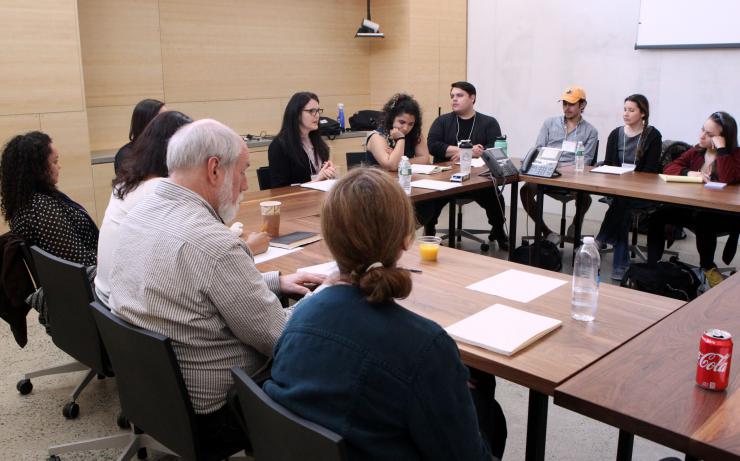
My First Steps into the Fornés Universe
By Nelson Diaz-Marcano
As soon I sat down in my first playwriting workshop with Josefina Lopez, I realized I was getting on a spiritual ship powered by something. As we explored our unconscious, I realized that something was our soul, our imagination, the untapped possibilities that we knew were there but didn’t know how to reach. As we were taking off and had a moment to think about what was happening, I found myself sitting in a circle, digging now instead of flying. Digging for resources on this new planet we had landed on with Josefina, but this time guided by Caridad Svich. This may sound like the premise of a grand adventure, but it was simpler than that. We were discussing and experiencing the work of La Maestra, María Irene Fornés, and the world she discovered for us.
It was my first time experiencing this journey. Others had taken it before, and you could tell whom. Their understanding of art and life were unique and powerful. Josefina was the first vessel for the Maestra’s teaching to reach us in a writing workshop. She worked with us on dismissing the conscious in which we walk and helped us step into the unconscious in which the education resides. Using a series of rapid and timed writing exercises, she chipped away the logic and allowed us to take the first baby steps in this new universe.
Sadly, time was limited so just when we were becoming comfortable in our new surroundings, it was over. But the job was already done, and Josefina did a great job bringing it full circle (both figuratively and literally).
After having lunch and time to reflect on the space we had gone into, it was time for Caridad’s workshop dedicated to Fornés’ Dramaturgy. It was the perfect sequence to digest what many of us had just experienced. The rapid-fire exorcism that we had gone through with Josefina had led us into the embrace of Caridad’s understanding. With patience and insight, she guided us to find the truth we had trouble grasping in this new world. Not only did she aid us in making sense of the realm we had just explored, but ultimately, she led us into the realization of how art and life are the same.
It was a surreal experience which you could tell was shared by everyone as we all sat down to eat dinner. Not the same experience, as many of us did different workshops throughout the day, but something. You could tell through the eyes of those around you, that the spiritual ship had landed and that many of us were being accepted by her teachings, by her spirit. You could feel her words embracing us and showing us the way forward, each one of us becoming a better artist today than we were yesterday. Thank you, María Irene Fornés, for unlocking the door for us.
'María Irene Fornés first presented Fefu and Her Friends in 1977. She set the piece in 1935. Yet its depiction of a mind coping with trauma feels as if it could’ve been written yesterday.'—Lauren Villegas
Trauma, #MeToo, and the Modern Feminist Mind in Fefu
By Lauren Villegas
I was an unlikely attendee at a conference focusing on a playwright I had never read or seen, so I treated the event like my Fornés 101. I had no idea what to expect. One thing I certainly didn’t expect was for some undergraduate actors to force me into introspection around my own mental health.
María Irene Fornés first presented Fefu and Her Friends in 1977. She set the piece in 1935. Yet its depiction of a mind coping with trauma feels as if it could’ve been written yesterday.
One of Fefu’s friends, Julia, uses a wheelchair and has blackouts and hallucinations, ever since an “accident,” which we hear described only vaguely: while she was out walking with a friend, a hunter shot a deer standing close to her. The only witness to her “accident” emphasizes that Julia wasn’t physically harmed—that the bullet didn’t hit her—but that she fell and convulsed and now has a “scar on the brain.” The characters grasp at straws to try to understand what has caused the dramatic change in their friend. They cannot understand her trauma.
Recently, I’ve been diagnosed with post-traumatic stress. What’s fun is that I didn’t know I had it until after a full-blown dissociative episode that lasted—I think—about two days and resulted in a brief stay in a hospital. I’ve been struggling to understand what happened, and why. Post-traumatic stress can seem to come from nowhere. Even I question my own trauma. I ask myself, “What on earth have I endured that is ‘bad enough’ for my mind to betray me?”
Perhaps Fefu has granted me some new insight into myself and how my mind might work.
The trigger for my dissociative episode was a perfect storm of working on a show where my character was violently raped, being harassed by a castmate, and direction and design that eroded the distinction between myself and my character. (I had a dissociative episode while rehearsing a scene in which my character had a dissociative episode).
My harasser never touched me. The harassment was constant and escalating, but mostly verbal. As with Julia’s “accident,” I didn’t experience any physical violence, but all the same, I succumbed to a scar on my brain.
The mind can find endlessly creative ways to turn against itself. Modern medicine still struggles to understand, name, and treat mental illness, and a miasma of stigma hangs heavily around those whose minds are deemed disordered, especially when those minds are women’s. Even in the post-#MeToo world, we still cannot bear to truly see women’s pain. We cannot accept and examine the trauma that is caused by simply trying to cope as a woman living in a patriarchy.
So thank you, María Irene. Thank you for showing me the shape of the shadows that linger in my mind, so that I can shine new light into them, understand them, and try to heal. Thank you for Julia and Fefu and the rest of her friends.

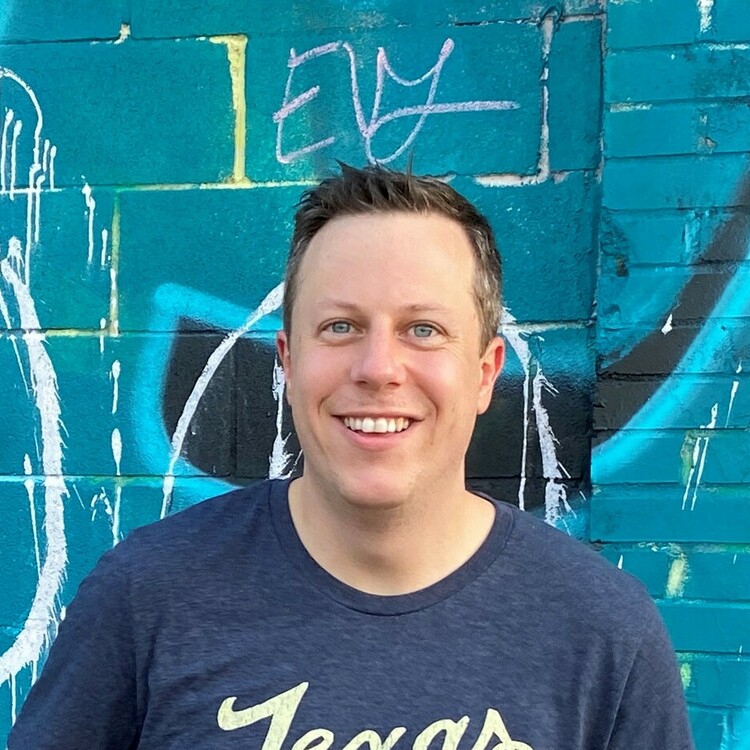
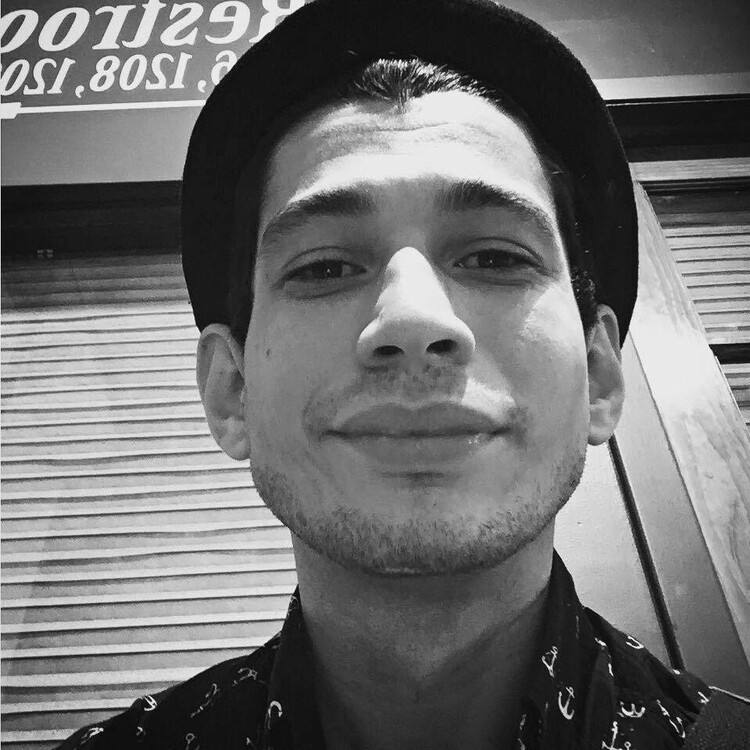
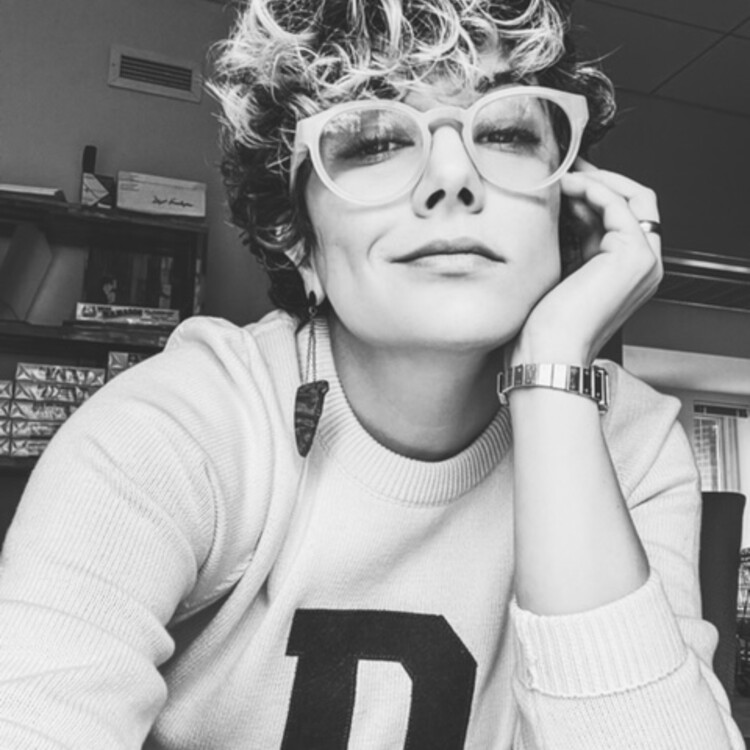
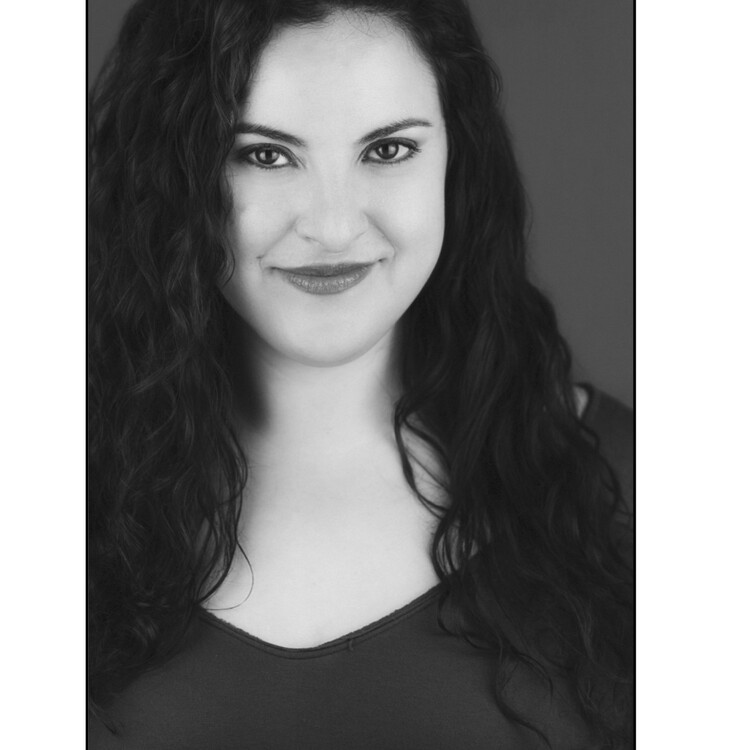


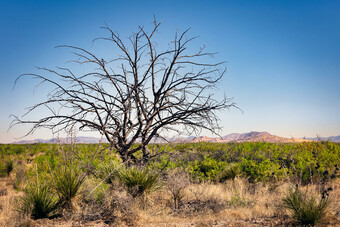

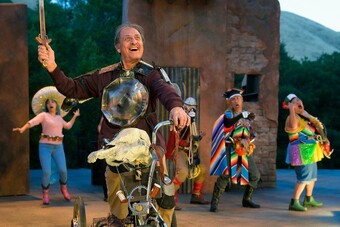



Comments
The article is just the start of the conversation—we want to know what you think about this subject, too! HowlRound is a space for knowledge-sharing, and we welcome spirited, thoughtful, and on-topic dialogue. Find our full comments policy here